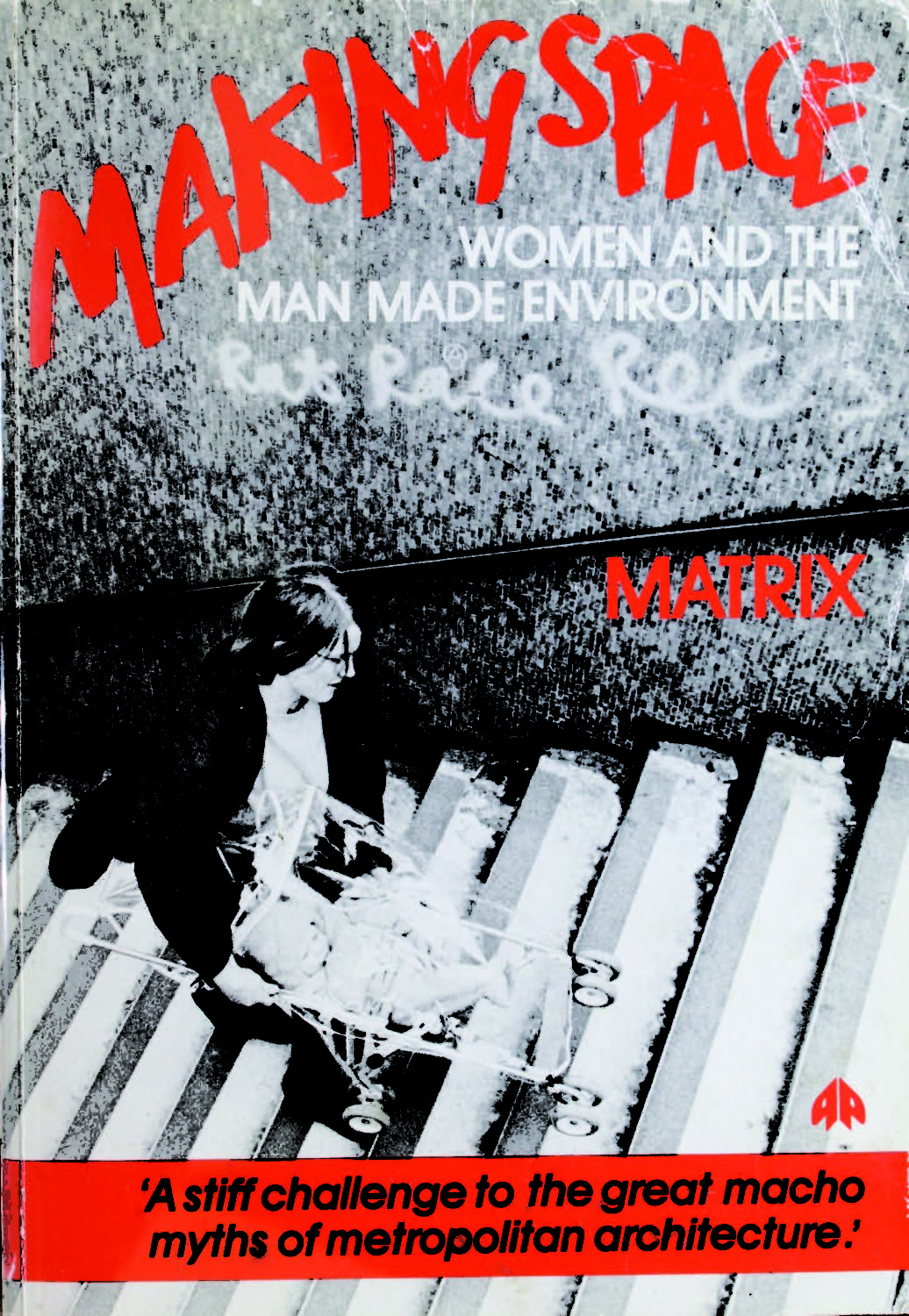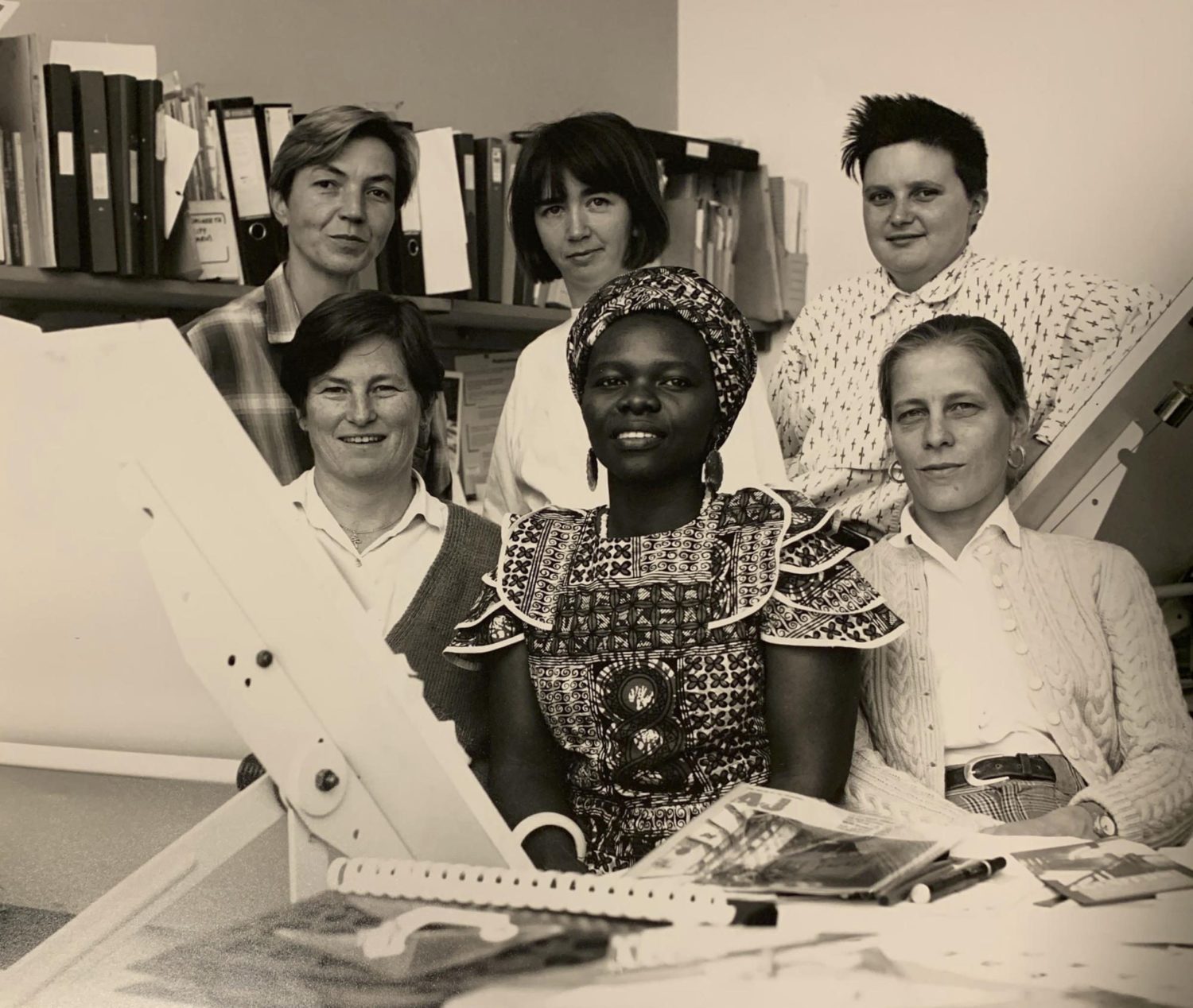What The Matrix Feminist Design Co-Operative Taught Us
By Something CuratedThe Matrix Feminist Design Co-operative was set up in 1980 as an architectural practice and a book group that grew out of the Feminist Design Collective, itself an offshoot of the New Architecture Movement’s feminist group. Active in London from 1981-1994, Matrix was a women’s co-operative with a non-hierarchical structure. The collective worked solely on state-funded, social building projects including women’s and refugee centres, facilities for women and children, construction training workshops and lesbian and gay housing projects. They also provided publicly funded architectural advice; helped establish educational programmes to increase access for women into architecture and building; as well as giving talks and writing about how space and gender are related through a variety of events and publications.

One of the earliest architectural groups in Britain to take an unequivocally feminist stance in their way of working and designing, Matrix’s practice unpacked issues involving women and the built environment, investigating the relationship of women to the architectural profession and to the procurement of architecture. Together, they published the book, Making Space: Women and the Man Made Environment, in which they explored the socio-political context of designing the built environment, and traced the implications of feminist theory and critique on urban design, such as the viewing of domestic work as a form of labour. In the tome, they set out one of the fundamental guiding principles of their work, the idea that, “Because women are brought up differently in our society we have different experiences and needs in relation to the built environment.”
In the 1970s and early 1980s, government funding was available for voluntary organisations in the form of technical aid, which could be used for advice on design and other issues related to the built environment. Matrix was very active in providing advice, operating as a Community Technical Aid Centre during this time. Through their architectural practice, the group developed participatory design methods, recognising that architects’ systems of operating needed to be revised in order to make the design process more comprehensible and engaging for clients and users. They consciously chose to research and design the types of spaces that had been largely overlooked by a male-led profession, such as women’s centres and nurseries, developing tools that could involve women in the design process from an early stage.

Jos Boys, Matrix founding member, explains: “At the core of the work by Matrix was a recognition that building and urban design often fail to consider the richness of our multiple ways of being in the world, or the various ways in which societies have devalued certain groups across different places and times. A persisting reliance on ‘standards’, ‘universals’ and ‘norms’ that often continue today, reinforce stereotypes about what certain people do and how they should behave – that a ‘woman’s place should be in the home’, for instance, or that it is possible to ‘be in the wrong place at the wrong time.”
Hosted by the Barbican Centre, and running until 23 December 2021, discover more about the collective at the exhibition How We Live Now. Co-curated by Matrix founding member Jos Boys, How We Live Now introduces archival and contemporary approaches to design that aim to empower voices and groups often excluded in the design of buildings, including Black and Asian women’s organisations, community and childcare groups and lesbian and gay housing co-operatives, to propose and explore more inclusive ways of designing, building and occupying spaces. With the pandemic only sharpening the existing inequalities within our cities and homes, such as a lack of access to safe, affordable housing, community facilities and green spaces, the question Matrix began to explore of how we can reimagine these spaces in more equitable ways, feels increasingly urgent.
Bibliography:
How We Live Now: Reimagining Spaces with Matrix Feminist Design Co-operative, Barbican, 2021
Tatjana Schneider, Nishat Awan & Jeremy Till, Spatial Agency
Matrix Open feminist architecture archive (MOfaa)
Pamela Buxton, ‘Work still to be done: Jos Boys on the continuing campaigns of Matrix,’ RIBA Journal, 2021
Feature image: Jagonari clients on a ‘brick picnic’ touring local buildings, with Matrix architects Anne Thorne and Kathleen Morrison, as a way to choose brick colours for their new centre. Courtesy Barbican